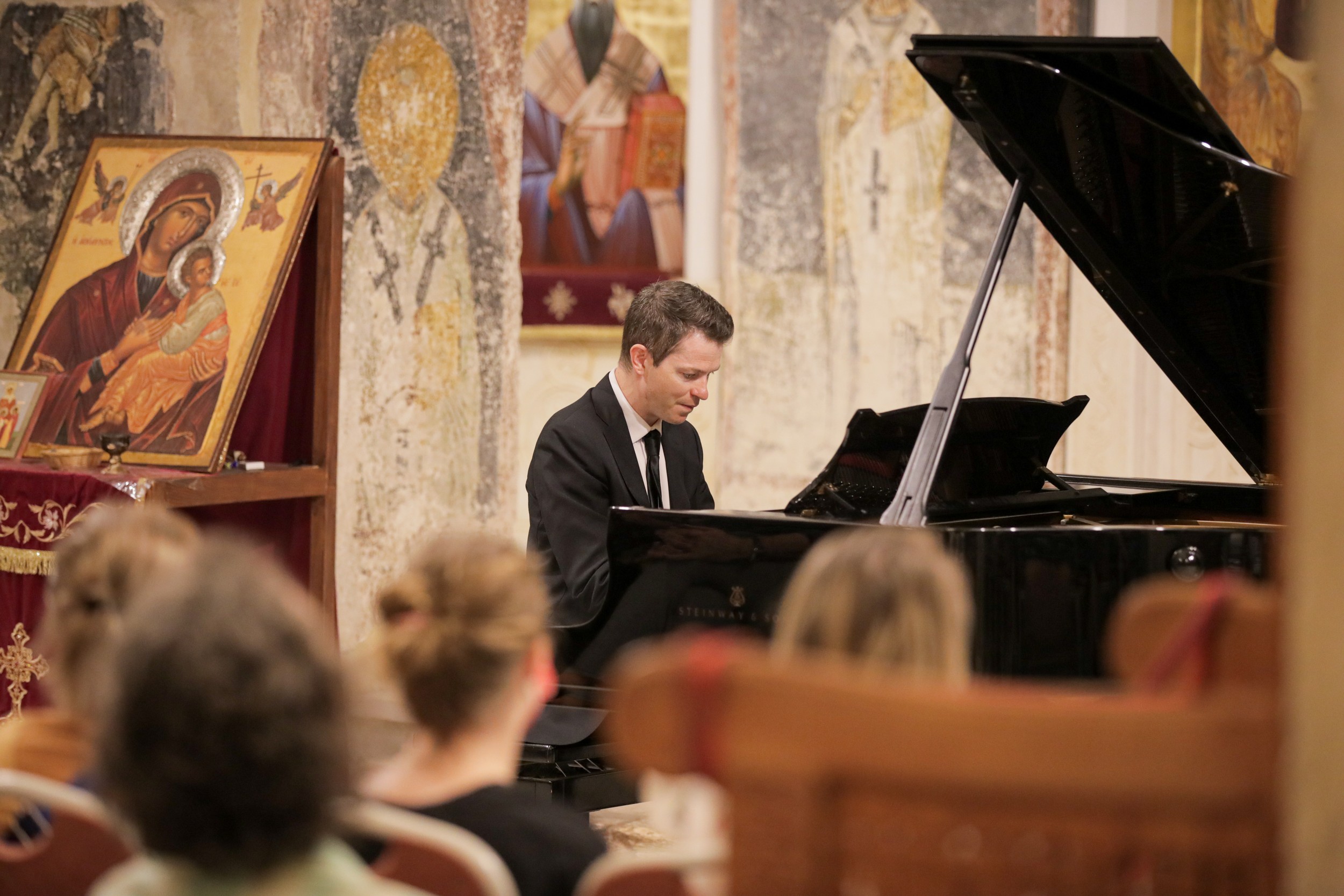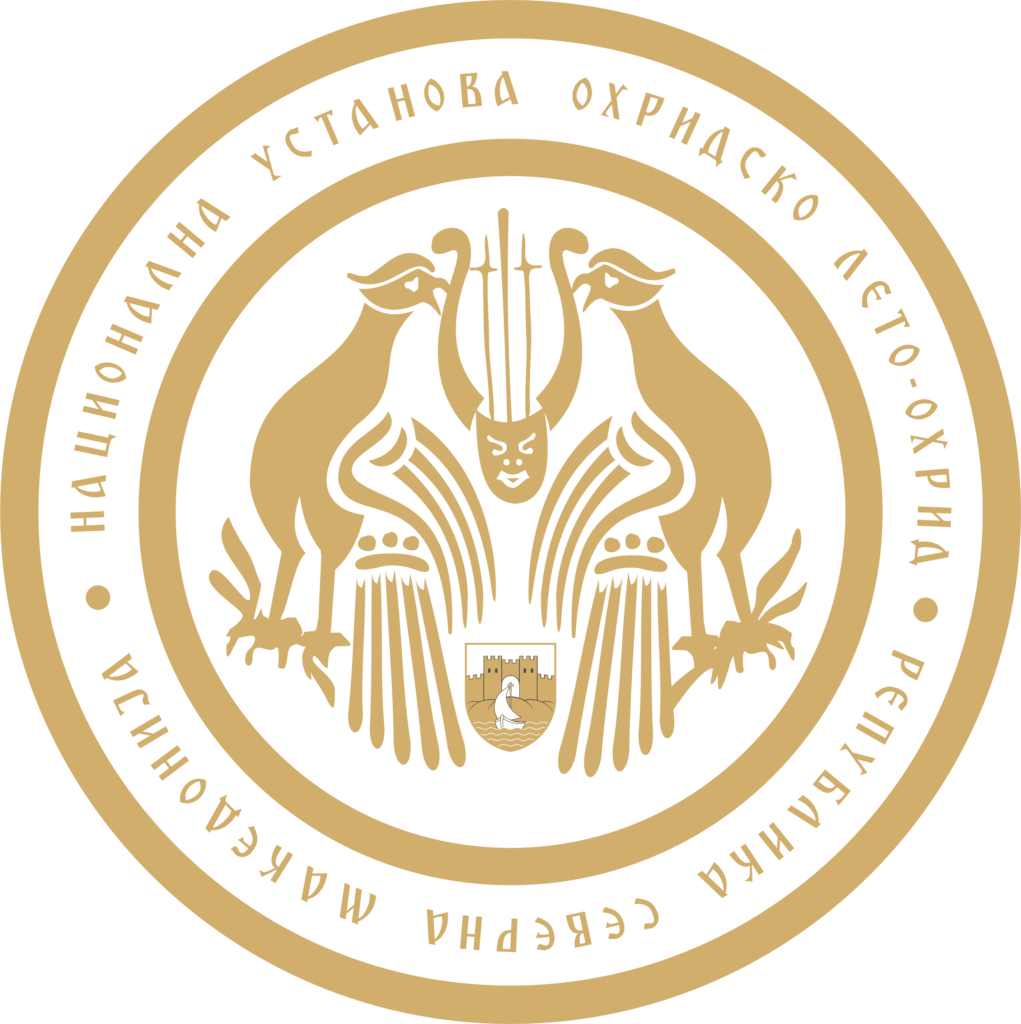
The main prerequisites for the success of a concert are based on two pillars: the program concept and the performance – with a note that, if the performance is outstanding, and the program choice insufficiently attractive, it (the performance) can complement the insufficiency which is, in the reverse case, much more difficult. However, if it is about a concert with an outstanding performance of very much attractive and quality pieces, then the qualifications would be undoubtedly in superlative. Such a concert evening to the audience of the Ohrid Summer Festival had the American pianist Stephen Beus.
Beus is an incredibly talented pianist, who has built his high reputation on the international concert sphere as a laureate to many international competitions and as a soloist who has performed with various symphonic orchestras, completing many recital performances worldwide. From the concert podium of “Gaveau” and “Cortot” in Paris, the theatre “San Carlo” in Naples, the Weill Recital Hall in Carnegie Hall, the concert halls in China, Russia, Finland, Switzerland, Germany, Italy etc., Beus brought his magic in the acoustic atmosphere of St. Sophia. It was an amazing experience to be part of the atmosphere created by his personality, making parallel sound worlds with his performance, through which he moved together with the audience, “telling” the audience about all the pieces from the concert program. That mastery in creating imaginary reality was the reason, at each return to reality, to hear exclamations by the audience.
Speaking of his performance, what should be especially pointed out are the original interpretative approach, the technical preparedness and perfectly mastered music scores. Namely, Beus presented an outstandingly precise piano technique, successfully manoeuvring with the complex accord factures, but also the demanding melodic movements, skilfully performing the passages and big melodic leaps in the fast tempos. That is why, the visual focus on his hands made an image of dancing across the piano keys. The suggestive performance undoubtedly showed that he approaches the mastery of pieces with perfect precision, conceiving and building more impeccably worked-on parts, who are afterwards united in a single great sound image.
Stephen Beus put the programme gravity of his concert performance upon piano literature of the 20th century, with a single exception made with the representative of the 19th century, Felix Mendelson, introducing the audience some not-enough-known authors (like Nikolay Medtner and Ron Yedidia), not forgetting some more known names, like Samuel Barber. Starting with the Mendelson’s Sonata in E major op.6, which the author wrote at the age of 16, the American pianist subtly “painted” the link between the four movements, coherently transitioning, with an obvious technical peculiarity, in the different contrasting tempos and dynamic nuances, making an introduction of its kind to what followed in the further concert flow.
The culmination was reached with the performance of “Sonata Tragica” and introducing the audience its author, the Russian composer and excellent pianist, Nikolay Medtner. Thanks to Beus, St. Sophia resonated with the genius of Rachmaninov’s contemporaty, whose creative works from the first part of the last century were successfully interpreted by the pianist before the Festival’s audience. Through the powerful and expressive interpretation, the abundance in storms in Medntner’s piece could be felt first-hand, which was organized and set through the whole tone range on the piano, linking the high and low registers with scale and accord passages, skilfully performed by Beus’ fingers. The strong accents and the notable forte dynamics created the dramatics in this piece, which after its finishing left some space for philosophical thought among the listeners.
Still holding it under the impressions of the Medtner’s piece, Stephen Beus introduced to the audience the contemporary Israeli composer Ron Yedidia, whose two etudes (No.7, called “Flight across the Ocean” and the unnamed no.20) from the cycle “12 great etudes” were performed in a single breath. It is about two, complexly built music pieces, whose multi-layered composition was presented by the pianist very securely.
With the Sonata in E-flat minor op.26 by Samuel Barber, the pianist shaped a grandious music finale, composed as a mosaic from four different characters and moods, with rich melodious and harmonious facture, in which bases stand the chromatics and the twelve-tone range. In the first movement, the punctured rhythm moved rather energetically, making a clear contrast with the parts where lyricism dominated. In the second one, he presented the scherzo very successfully, whereas in the third movement he gradually developed the dissonant accord progression coloring the sound atmosphere with dark hues. He sparkled in the fourth movement, precisely performing the complexly syncoped rhythm of a fugue, simultaneously excerpting the essence of the jazz harmonies.
After completing the official programme, and wishing to satisfy the audience’s open desire for more music, Stephen Beus gave two encores. The first one was the piano version of the famous song “Can’t help loving that man of mine” by Jerome Kern, which, as he shared himself, has an intimate link to his life (his wife performed this song at their wedding ceremony), and at the second one, in the spirit of virtuosity presented throughout the whole programme, he played the “Hungarian Rhapsody No.2” by Franc Liszt. Completely deserved, the pianist left the concert podium greeted with standing applause.
Aleksandar Trajkovski

